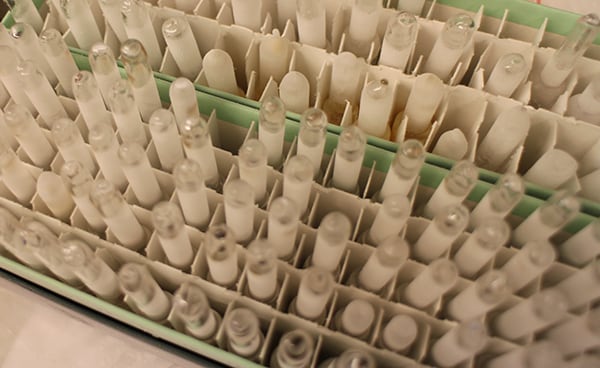About the Arbovirus Reference Collection (ARC)
Mission
CDC’s ARC, housed within the Arboviral Diseases Branch (ADB) at the Division of Vector-Borne Diseases (DVBD; see photo), provides reagents to public health laboratories for arbovirus diagnostics for which no commercial assays are available. The collection also serves as an arbovirus repository for reference strains.
- The ARC houses reference quantities of reagents and reference viruses that can be distributed to research and commercial laboratories.
- As analyte-specific reagents or validated assays become available commercially, distribution of reagents from the ARC is discontinued to preserve reference stocks.
- The ARC has limited capacity and cannot support large-scale testing for research projects or routine diagnostics.
The ARC is a key element of CDC’s activities as a World Health Organization Collaborating Centre for Arthropod-Borne Viruses Reference and Research.
History
- Officially established in 1958 in Atlanta, Georgia
- Relocated to what is now DVBD in Fort Collins, Colorado in 1973
- In 2004, accepted the remaining Yale Arbovirus Research Unit (YARU) collection (see photo)
- Received collections from retiring or retired CDC researchers, 2008-2015
- Receive individual deposits on an ongoing basis
Contributing Staff
- Amy Lambert – Team Lead
- Eric Mossel – Sub-team Lead
- Brandy Russell – ARC Curator
- Christin Goodman – Reagent Production Optimization
- Trudy Chambers – Reagent Production
- Holly Hughes – Full Genome Sequencing

The Division of Vector-Borne Diseases in Fort Collins, Colorado. Credit: CDC
We’d like to collaborate with you! You can support public health by depositing your isolates in CDC’s Arbovirus Reference Collection (ARC). The ARC offers long-term curation, maintenance, and distribution of valuable isolates. Contact the ARC staff about depositing your isolates for long-term curation, maintenance, and distribution.
- Questions about ARC? Send an email to: reagents2@cdc.gov
- Other questions? Contact CDC-INFO.
- Ready to submit an isolate? Complete the ARC Submission Form [PDF – 3 pages] and the Simple Letter Agreement [PDF – 5 pages]. Then email the form and the letter to reagents2@cdc.gov.
If you need reagents, visit our Arboviral Reagent Ordering System.

Yale Arbovirus Research Unit collection housed at DVBD. Credit: CDC